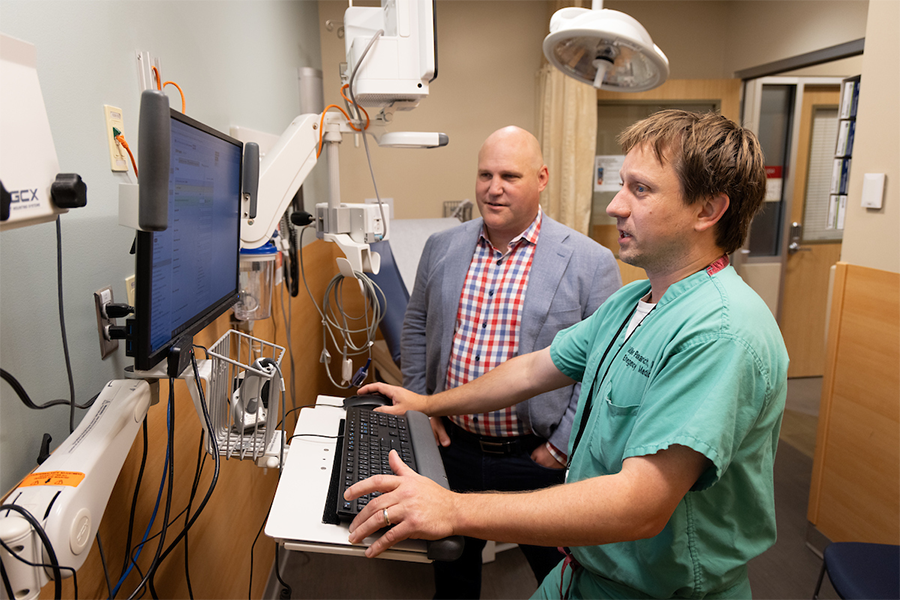
Sepsis is a severe immune system overreaction to infection that can quickly lead to organ failure and death if not treated promptly. In a typical year, according to the Centers for Disease Control and Prevention, at least 1.7 million adults in the U.S. develop sepsis and at least 350,000 die from the infection during hospitalization or are discharged to hospice.
Puskarich says researchers have been trying to treat sepsis as a single disease for years with modest progress. Now there’s a shift toward discerning distinct types of sepsis and targeting them individually. An analogy is how in the early days of cancer research, all cancers were seen as the same. But as we understood the disease more, we began to focus therapies on specific types and stages of cancer.
Puskarich is running a trial called STOP (Senolytics To slOw Progression of Sepsis)- Sepsis to analyze how well fisetin, a plant-derived chemical compound, helps treat sepsis in older, hospitalized patients. Previous research illustrated that fisetin can improve inflammatory processes in older animals by targeting senescent cells, those that get old and stop dividing, but do not die. These cells may play a key role in sepsis development because they not only cause inflammation, but also spread it by triggering nearby cells.
The STOP-Sepsis trial uses an adaptive design — a type of clinical trial design that helps to increase the efficiency of a study by allowing for real-time adjustments to the design based on emerging information. It’s part of the Minnesota Complex Innovative Design Research lab (M-CIDeR), a collaboration of faculty in the SPH Division of Biostatistics and Health Data
Science led by the division’s head Professor Joe Koopmeiners. M-CIDeR specializes in developing adaptive trial designs.
STOP-Sepsis is an NIH-funded phase 2 study, meaning it aims to determine the optimal dosage and frequency of fisetin and compare it to a standard treatment or placebo in about 100-300 participants.
The Power of Adaptive Trial Design
Adaptive trials can result in faster, more ethical results for clinical or behavioral research on human participants. Unlike traditional trials, adaptive trials adjust treatment assignments based on real-time performance; if one treatment starts to clearly show better efficacy, for example, more patients can receive it, and the trial may even end early.
“Usually, you would have to do two studies, one to find a correct dose and then another to evaluate how well that dose works,” says Koopmeiners. “But the goal here is to see if we can answer both questions with a single trial. Hopefully, we can minimize who receives ineffective treatments over the course of the trial.”
M-Cider Moves the Needle
SPH launched the Minnesota Complex Innovative Design Research lab (M-CIDeR) in early 2022 with the goal of implementing innovative trial designs in collaboration with researchers across the University. As they pursue these objectives, biostatisticians in the lab develop novel statistical methods and open-source tools that are freely available to the biomedical research community.
Although the lab is still young, M-CIDeR is already collaborating on five studies at the University. According to Professor Joe Koopmeiners, head of the SPH Division of Biostatistics and Health Data Science (which houses M-CIDeR), the lab also aims to put University research on the map by expanding its collaborative scope to more investigators and, potentially, to investigators outside the University.
“We’re interested in creating infrastructure at the University that would facilitate us taking innovative designs and translating them into clinical research,” he says. “We hope to provide the tools that allow clinical and behavioral researchers to answer more complex questions more efficiently than you can with standard designs, and make our collaborators more competitive for external funding.”


